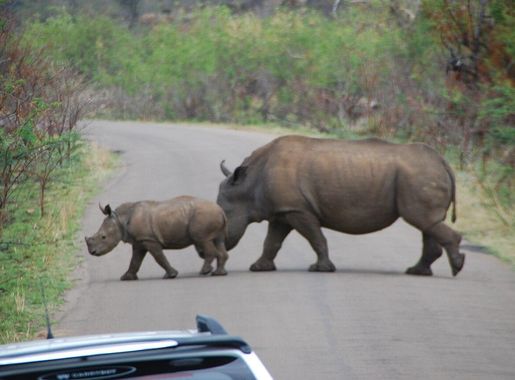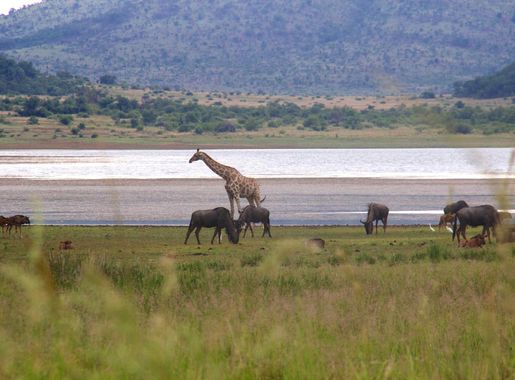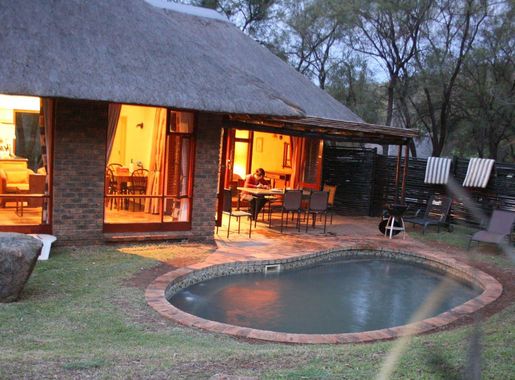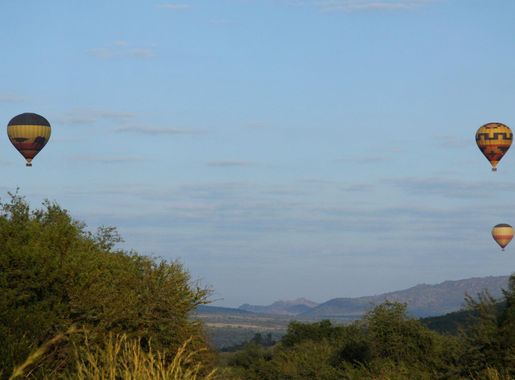
Pilanesberg National Park: A Wildlife Haven in South Africa
Discover the wonders of Pilanesberg National Park, a wildlife sanctuary in South Africa's North West Province, home to the Big Five and a rich diversity of flora and fauna.
Nestled in the crater of an ancient volcano, Pilanesberg National Park is a wildlife sanctuary like no other. Located in the North West Province of South Africa, this park covers an area of 550 square kilometers and offers visitors the chance to experience the Big Five – lion, leopard, elephant, buffalo, and rhino – in their natural habitat. The park's diverse landscape, from open grasslands and wooded valleys to rocky outcrops and rolling hills, provides a stunning backdrop for wildlife viewing and photography. Pilanesberg is not just about the Big Five. It is home to over 7,000 animals, including cheetahs, hyenas, giraffes, zebras, and a variety of antelopes. Bird watchers will be thrilled with the park's 350 bird species, making it a paradise for birding enthusiasts. The park's rich biodiversity is supported by the unique transition zone between the Kalahari and Lowveld regions, creating a melting pot of flora and fauna. For those seeking adventure, the park offers a range of activities including guided game drives, hot air balloon safaris, and bush walks. There are also several picnic spots and hides where visitors can relax and enjoy the serene environment. With its proximity to Johannesburg, Pilanesberg National Park is an accessible and unforgettable destination for both day trips and extended stays.
Local tips in Pilanesberg National Park
- Visit during the dry season (May to September) for the best wildlife viewing, as animals gather around water sources.
- Early morning and late afternoon game drives offer the best chances of seeing predators like lions and leopards.
- Pack binoculars and a good camera for bird watching and capturing memories of the diverse wildlife.
- Stay in one of the park's lodges or campsites to experience the park at different times of the day.
- Bring insect repellent and sunscreen, as the African sun can be harsh, even during cooler months.
Pilanesberg National Park: A Wildlife Haven in South Africa
Nestled in the crater of an ancient volcano, Pilanesberg National Park is a wildlife sanctuary like no other. Located in the North West Province of South Africa, this park covers an area of 550 square kilometers and offers visitors the chance to experience the Big Five – lion, leopard, elephant, buffalo, and rhino – in their natural habitat. The park's diverse landscape, from open grasslands and wooded valleys to rocky outcrops and rolling hills, provides a stunning backdrop for wildlife viewing and photography. Pilanesberg is not just about the Big Five. It is home to over 7,000 animals, including cheetahs, hyenas, giraffes, zebras, and a variety of antelopes. Bird watchers will be thrilled with the park's 350 bird species, making it a paradise for birding enthusiasts. The park's rich biodiversity is supported by the unique transition zone between the Kalahari and Lowveld regions, creating a melting pot of flora and fauna. For those seeking adventure, the park offers a range of activities including guided game drives, hot air balloon safaris, and bush walks. There are also several picnic spots and hides where visitors can relax and enjoy the serene environment. With its proximity to Johannesburg, Pilanesberg National Park is an accessible and unforgettable destination for both day trips and extended stays.
When is the best time to go to Pilanesberg National Park?
Iconic landmarks you can’t miss
Sun City Resort
Discover the luxurious Sun City Resort, where adventure meets relaxation in the heart of South Africa's stunning landscapes.

Valley of Waves
Experience the ultimate water adventure at the Valley of Waves in Sun City, where fun, relaxation, and excitement await for every visitor.
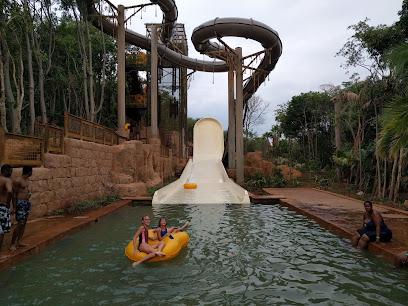
Bakubung Bush Lodge
Experience luxury and wildlife at Bakubung Bush Lodge, nestled in the heart of Pilanesberg National Park, South Africa.

Kwa Maritane Bush lodge
Discover Kwa Maritane Bush Lodge: A luxurious haven in Pilanesberg Game Reserve, where nature meets elegant comfort for an unforgettable escape.

Ivory Tree Game Lodge
Experience luxury and adventure at Ivory Tree Game Lodge, nestled in Pilanesberg National Park, offering exquisite dining, wildlife encounters, and relaxation.

Shepherd's Tree Game Lodge
Experience the luxury of Shepherd's Tree Game Lodge, where breathtaking nature meets exquisite accommodations in the heart of Pilanesberg National Park.
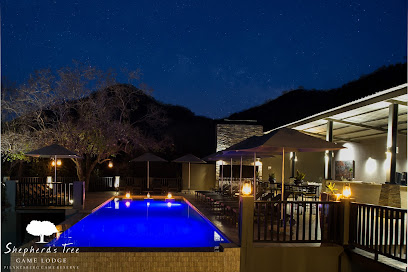
Bakubung Gate Pilanesberg National Park
Experience South Africa's wildlife wonderland at Bakubung Gate, the gateway to Pilanesberg National Park's breathtaking landscapes and diverse ecosystems.
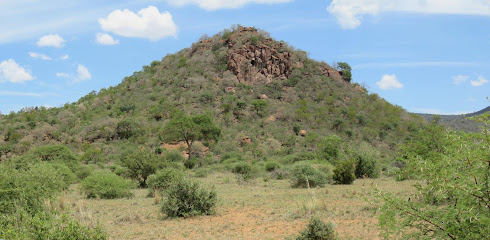
Black Rhino Game Lodge
Experience the luxury of nature at Black Rhino Game Lodge, where breathtaking wildlife encounters meet elegant accommodations in South Africa.

Pilanesberg
Experience the breathtaking beauty and rich wildlife of Pilanesberg National Park, a premier South African destination for nature lovers and adventure seekers.
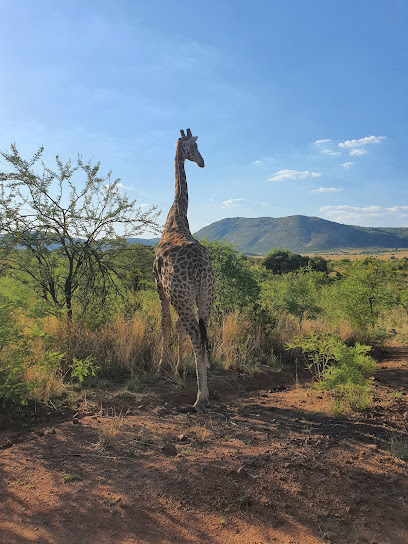
Mankwe GAMETRACKERS
Discover the thrill of wildlife adventures at Mankwe GAMETRACKERS in Sun City, where nature and excitement meet in the heart of South Africa.
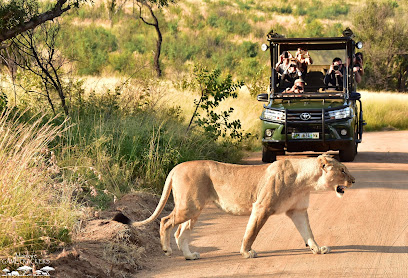
Predator World
Explore Predator World in Sun City for an unforgettable wildlife adventure, featuring majestic predators from South Africa and around the globe.
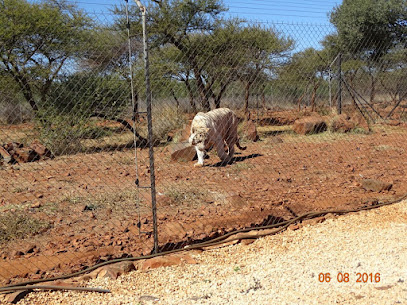
Black Rhino Game Reserve
Explore the breathtaking wilderness of Black Rhino Game Reserve, where unforgettable safari adventures await amidst diverse wildlife and stunning landscapes.
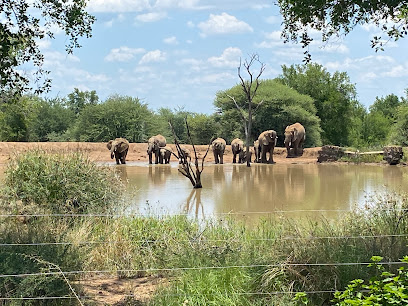
Zip 2000
Experience the thrill of Zip 2000, the longest zip line in South Africa, soaring through the breathtaking landscapes of Sun City Resort.
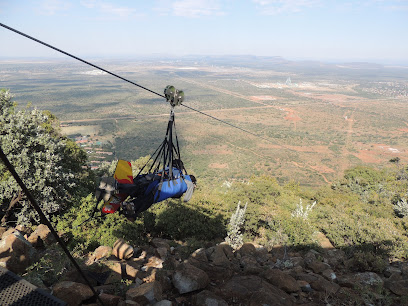
Rathlogo Hide
Discover the enchanting Rathlogo Hide in Pilanesberg National Park, where stunning landscapes and wildlife await every nature lover.
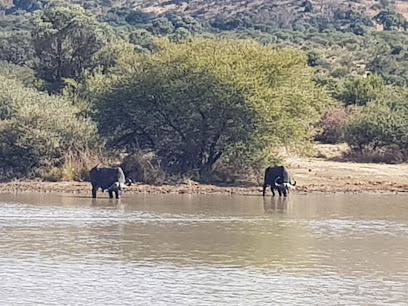
Tshukudu Bush Lodge
Discover the perfect blend of luxury and nature at Tshukudu Bush Lodge, your gateway to the wildlife wonders of Pilanesberg National Park.

Unmissable attractions to see
Kgaswane Nature Reserve Rustenburg
Discover the breathtaking landscapes and diverse wildlife at Kgaswane Nature Reserve, a tranquil escape in Rustenburg, South Africa.
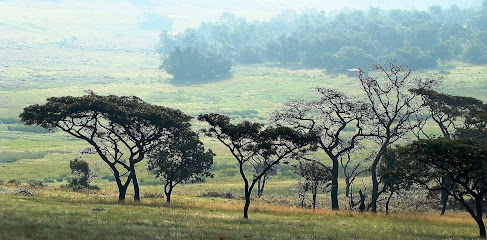
Bakubung Gate Pilanesberg National Park
Experience the Thrills of Wildlife and Natural Beauty at Bakubung Gate in Pilanesberg National Park, South Africa's Premier Safari Destination.
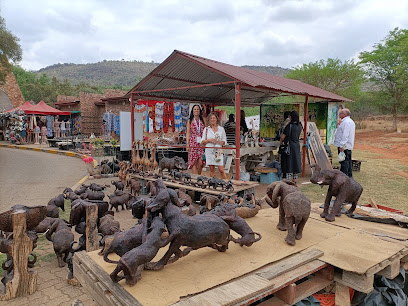
Madikwe Game Reserve
Experience the breathtaking wildlife and stunning landscapes of Madikwe Game Reserve, South Africa's premier safari destination.
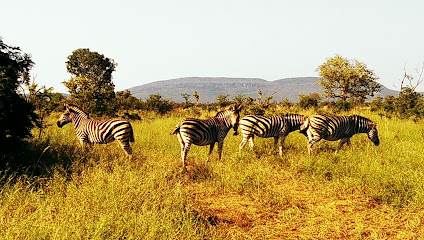
Pilanesberg
Discover the stunning landscapes and incredible wildlife of Pilanesberg National Park, a true gem in South Africa's natural heritage.
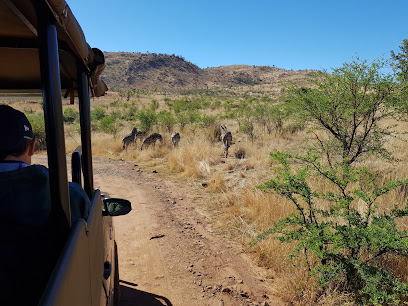
Predator World
Explore Predator World in Sun City, a unique zoo experience showcasing majestic predators and focusing on wildlife conservation.
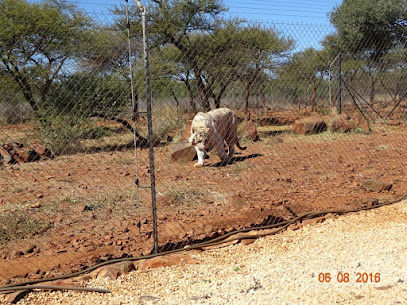
Zip 2000
Experience the thrill of the longest zip line in South Africa at Zip 2000 in Sun City, where adventure meets breathtaking views.
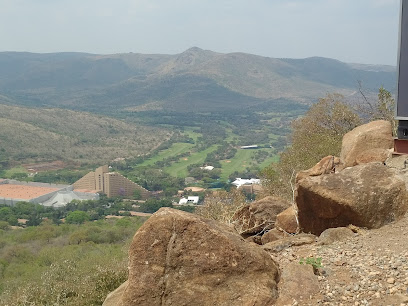
Fish Eagle Picnic Site, Pilanesberg National Park
Discover the tranquility of Fish Eagle Picnic Site in Pilanesberg National Park, a perfect spot to relax and enjoy nature’s beauty while surrounded by wildlife.
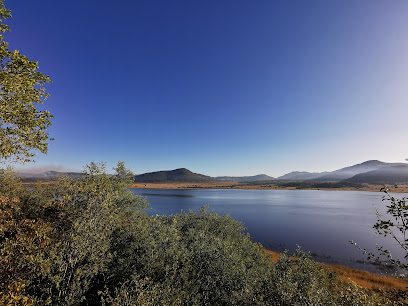
Rathlogo Hide
Experience breathtaking wildlife views at Rathlogo Hide, a serene observation deck in Pilanesberg National Park, South Africa.
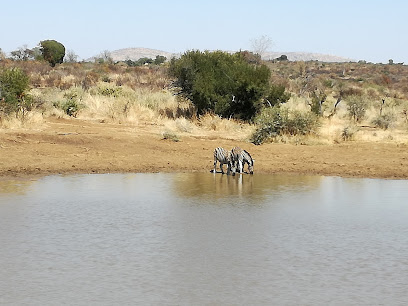
Mankwe Dam
Discover the tranquil beauty of Mankwe Dam in Pilanesberg National Park, where nature, wildlife, and stunning sunsets await every traveler.
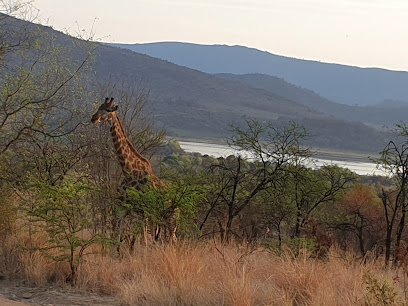
The Jungle of the Lost City
Discover the enchanting Jungle of the Lost City in Sun City, a vibrant garden filled with exotic flora and diverse wildlife, perfect for relaxation and exploration.
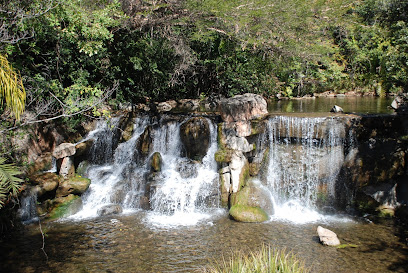
Safari Pilanesberg
Discover the thrilling wildlife and stunning landscapes at Safari Pilanesberg, South Africa's premier safari destination.
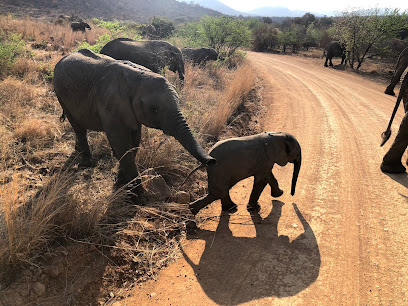
Bakgatla Gate Pilanesberg National Park
Discover the beauty and wildlife of Pilanesberg National Park through the stunning Bakgatla Gate, a gateway to adventure and nature's wonders.
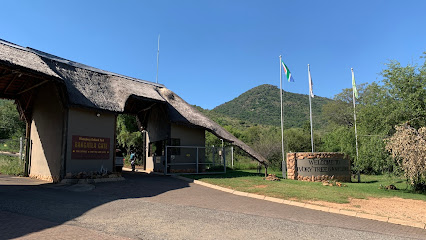
Makorwane Hide, Pilanesberg National Park
Discover tranquility and wildlife at Makorwane Hide in Pilanesberg National Park, a must-visit haven for nature lovers and adventure seekers.
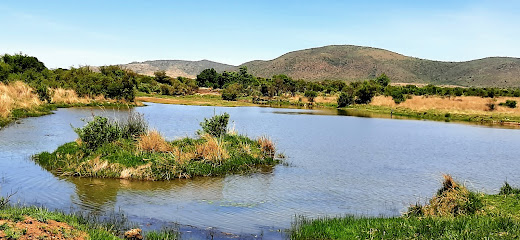
Rare Game Experience - The Kingdom Resort
Explore the Rich Diversity of Africa's Wildlife at Rare Game Experience - The Kingdom Resort, an Unforgettable Safari Adventure.
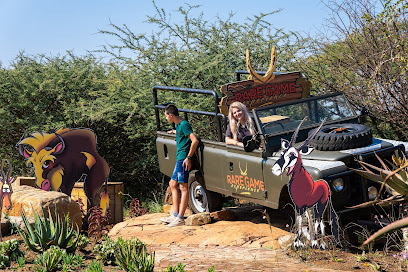
Nare Walking Safaris
Discover the wild beauty of Pilanesberg National Park through immersive walking safaris at Nare Walking Safaris, where adventure awaits.
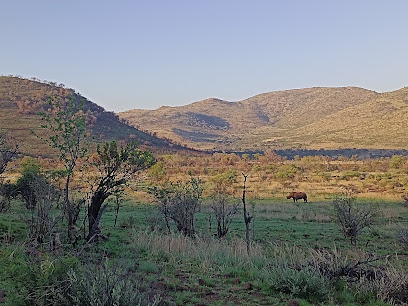
Essential places to dine
The Palace of the Lost City
Discover unparalleled luxury and adventure at The Palace of the Lost City in Sun City, South Africa—where opulence meets nature's beauty.

Bosveld Shebeen
Discover Bosveld Shebeen: A Culinary Delight in Sun City Offering Authentic South African Cuisine Amidst Vibrant Culture.
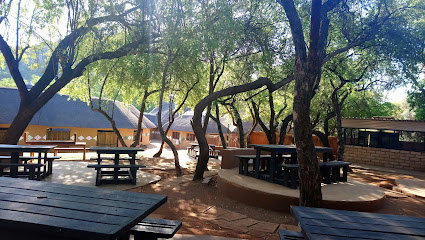
Ivory Tree Game Lodge
Experience luxury and adventure at Ivory Tree Game Lodge in Pilanesberg National Park - where unforgettable safaris meet exquisite comfort.

Ocean Basket Sun City
Experience fresh seafood and Mediterranean flavors at Ocean Basket Sun City - where family dining meets stunning resort ambiance.

Shepherd's Tree Game Lodge
Discover unparalleled luxury and wildlife experiences at Shepherd's Tree Game Lodge in Pilanesberg National Park.
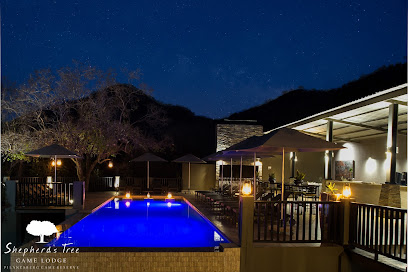
Hard Rock Cafe Sun City
Discover American cuisine amidst iconic rock memorabilia at Hard Rock Cafe Sun City - where every meal is a celebration of music.
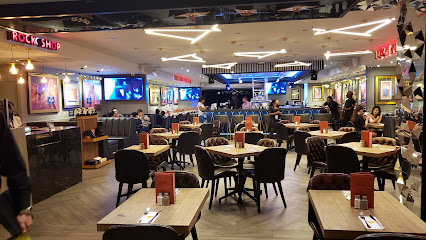
Legends Restaurant
Discover diverse flavors at Legends Restaurant in Sun City Resort, where exquisite cuisine meets stunning ambiance for an unforgettable dining experience.
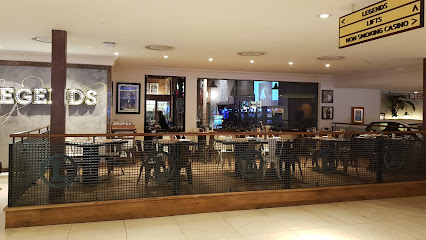
Wimpy
Discover family-friendly dining at Wimpy in Sun City - where delicious fast food meets fun-filled adventures near Valley of the Waves.
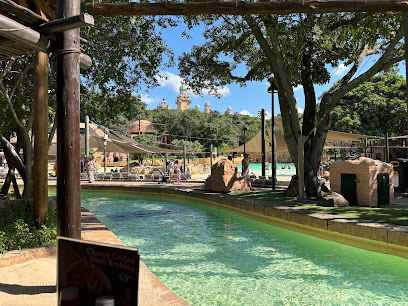
Bakubung Restaurant
Experience the essence of South African cuisine at Bakubung Restaurant in Sun City - where every meal tells a story.
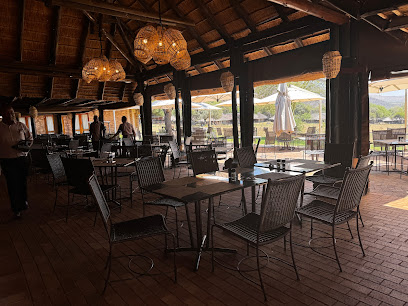
Casa Bella Sun City
Experience authentic Italian cuisine at Casa Bella in Sun City; renowned for delicious pizzas and warm hospitality amidst vibrant entertainment.
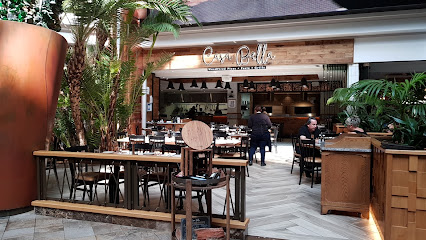
The Raj - Sun City
Discover authentic Indian flavors at The Raj in Sun City – where culinary excellence meets vibrant ambiance.
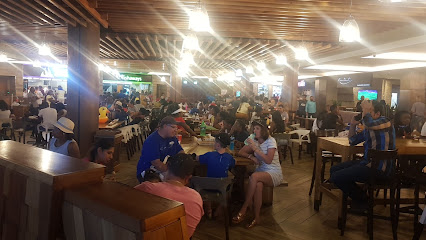
Palomino Spur Steak Ranch
Experience delicious family-friendly dining at Palomino Spur Steak Ranch in Sun City – where great food meets fun for all ages!
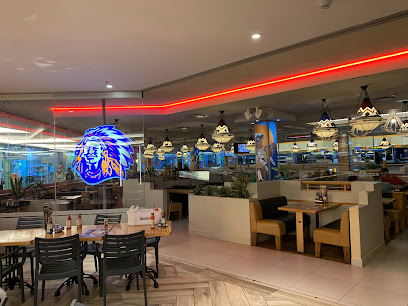
The Jungle Bar & Lounge
Experience culinary delight amidst nature at The Jungle Bar & Lounge in Pilanesberg National Park – where flavor meets adventure.
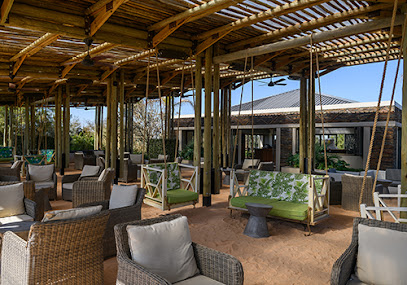
Acacia Terrace Café
Discover culinary delights at Acacia Terrace Café in Pilanesberg National Park, where nature meets exquisite dining in a tranquil setting.

Calistos
Discover authentic Portuguese cuisine at Calistos in Sun City Resort – where rich flavors meet vibrant atmosphere for an unforgettable dining experience.
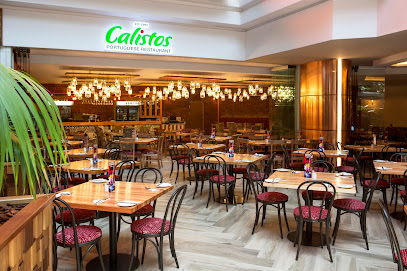
Markets, malls and hidden boutiques
SUPERSPAR Sun Village
Explore the vibrant offerings of SUPERSPAR Sun Village, your go-to supermarket for fresh produce and local products in the heart of Sun City.
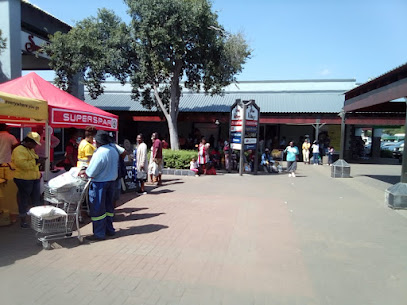
Pick 'n Pay
Explore the vibrant Pick 'n Pay in Moruleng for an exceptional shopping experience, offering everything from groceries to local liquor.
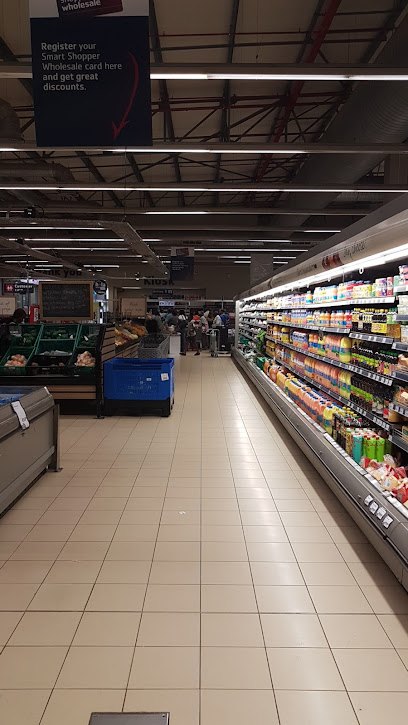
Sun Central
Experience the vibrant shopping and dining scene at Sun Central, the heart of Sun City's entertainment and leisure activities.
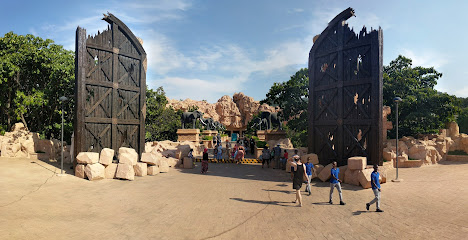
InDaBush Convenience and Curio Shops
Discover unique souvenirs and local crafts at InDaBush Convenience and Curio Shops, nestled in the heart of Pilanesberg National Park.
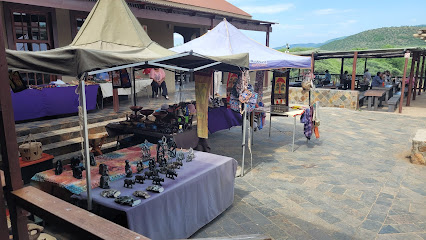
Shoprite Mogwase
Discover local flavors and everyday essentials at Shoprite Mogwase, your ultimate shopping destination in the heart of Mogwase.

Cabanas Beach Shop - Sun City
Explore Cabanas Beach Shop at Sun City for trendy beachwear, unique souvenirs, and a laid-back shopping experience amidst stunning resort landscapes.
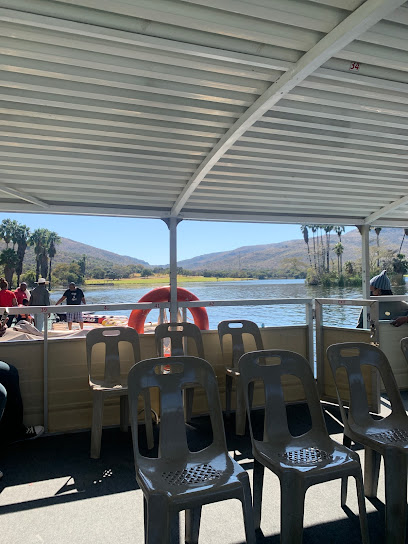
African Origins - Sun City Resort
Explore African Origins at Sun City Resort for unique clothing that blends contemporary style with traditional African flair, perfect for tourists seeking fashionable souvenirs.

PEP Moruleng Mall
Explore PEP Moruleng Mall for affordable and stylish clothing for the whole family in a vibrant shopping atmosphere.

Quiksilver Sun City
Discover your next adventure at Quiksilver Sun City, the ultimate retail destination for surf, skate, and sportswear enthusiasts.
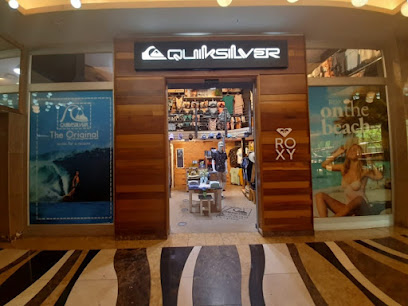
Pro shop
Explore the Pro Shop at Sun City for top golf gear, expert advice, and exclusive merchandise in a stunning resort setting.
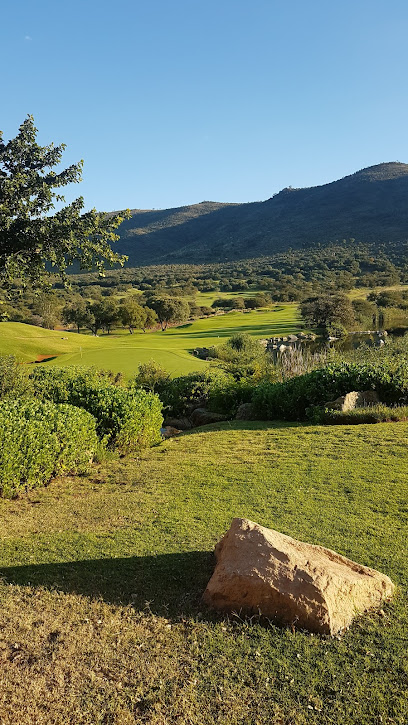
Curio Shop Sun City
Explore the Curio Shop at Sun City for unique South African souvenirs and handcrafted treasures that reflect the vibrant local culture.
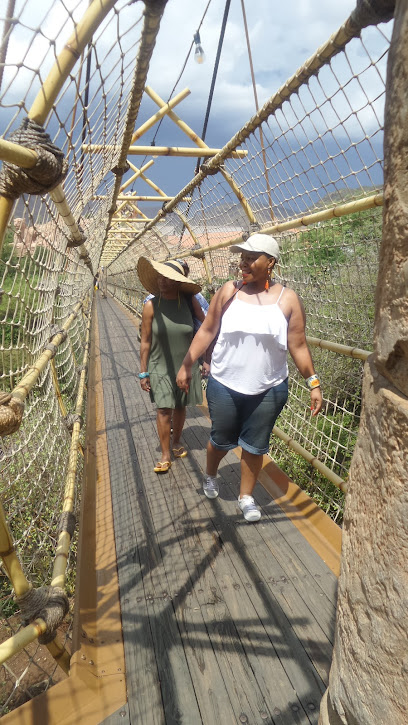
Browns The Diamond Store
Discover exquisite jewelry at Browns The Diamond Store in Sun City, where luxury meets craftsmanship in a stunning resort setting.
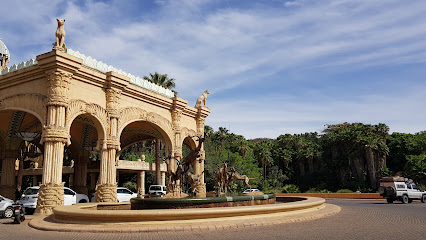
VonZipper Beach Store
Discover beachwear, surf gear, and accessories at VonZipper Beach Store in Sun City Resort, the ultimate shopping destination for beach enthusiasts.
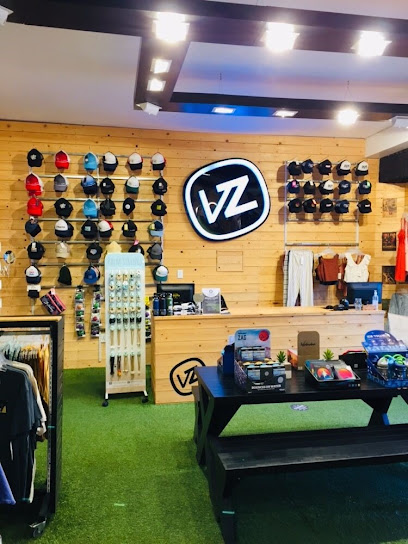
Candylicious Sun City Resort
Discover a world of sweets at Candylicious in Sun City Resort, where every candy is a delightful experience waiting to be unwrapped.
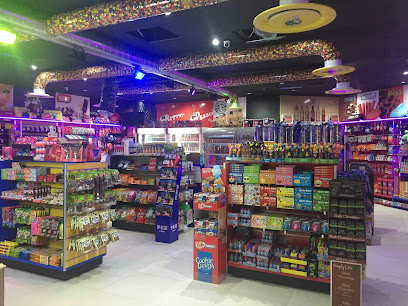
Out of Africa Kids - Sun City Resort
Discover Out of Africa Kids at Sun City Resort, where children's fashion meets fun in an enchanting shopping experience.
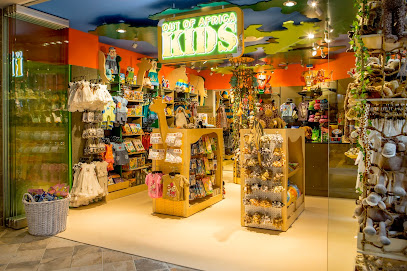
Essential bars & hidden hideouts
Pilanesberg National Park
Explore Pilanesberg National Park – A Wildlife Paradise in South Africa's Scenic Landscape with Big Five Adventures.
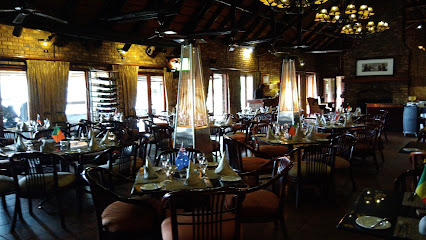
The Palace of the Lost City
Experience the enchanting blend of luxury and adventure at the Palace of the Lost City in Sun City, South Africa, where opulence meets African heritage.

The Kingdom Resort
Experience unparalleled luxury and adventure at The Kingdom Resort, the perfect getaway in Pilanesberg National Park, South Africa.

Kwa Maritane Bush lodge
Discover the beauty and adventure of Kwa Maritane Bush Lodge, your luxury gateway to the breathtaking Pilanesberg Game Reserve.

Ivory Tree Game Lodge
Discover luxury and adventure at Ivory Tree Game Lodge, your gateway to the stunning wildlife of Pilanesberg National Park.

Shepherd's Tree Game Lodge
Experience the perfect blend of luxury and adventure at Shepherd's Tree Game Lodge, nestled in the heart of Pilanesberg National Park.
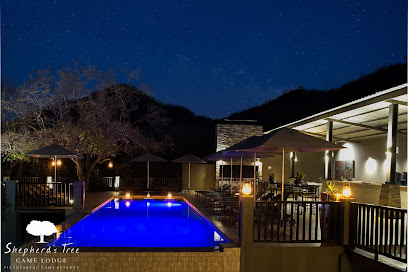
Hard Rock Cafe Sun City
Indulge in a rock-inspired dining experience at Hard Rock Cafe Sun City, where American cuisine meets vibrant atmosphere in a stunning resort setting.

Bakubung Restaurant
Experience the essence of African cuisine at Bakubung Restaurant in Sun City, where exquisite flavors and stunning views await.
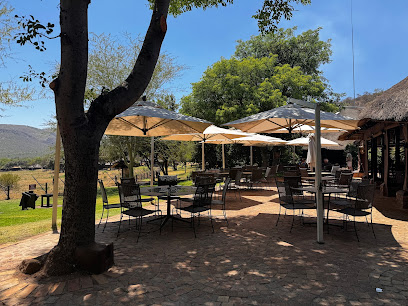
Black Rhino Game Reserve
Immerse yourself in the wild wonders of the Black Rhino Game Reserve, a prime destination for wildlife enthusiasts in South Africa's Pilanesberg.
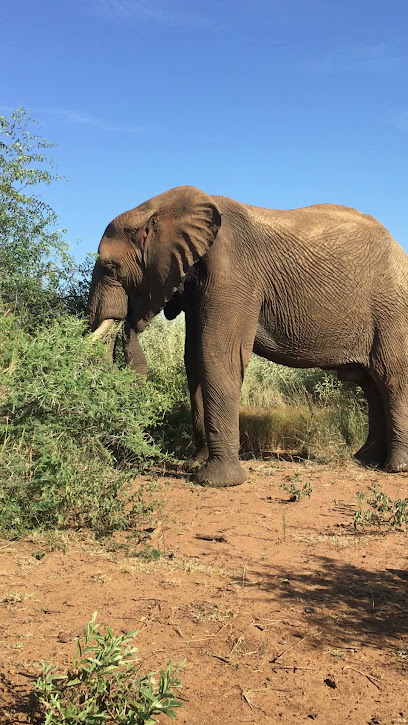
The Jungle Bar & Lounge
Experience the vibrant atmosphere and delectable cuisine at The Jungle Bar & Lounge in Pilanesberg National Park.
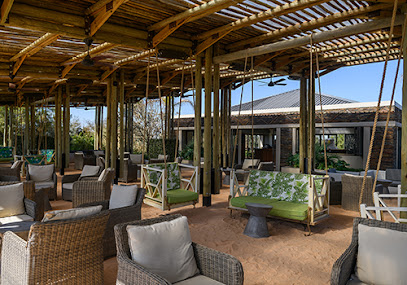
Acacia Terrace Café
Discover culinary delights amidst the natural beauty of Pilanesberg at Acacia Terrace Café, where every meal is a celebration of South African flavors.
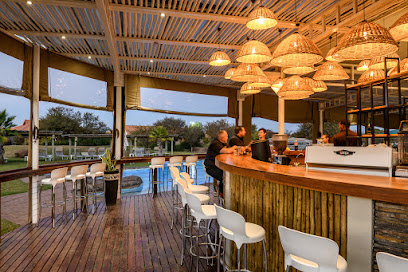
Tshukudu Bush Lodge
Discover the ultimate luxury experience in the heart of Pilanesberg National Park at Tshukudu Bush Lodge, where nature meets elegance.

Marula Grill Restaurant
Discover the flavors of South Africa at Marula Grill Restaurant, nestled in the heart of Pilanesberg National Park.
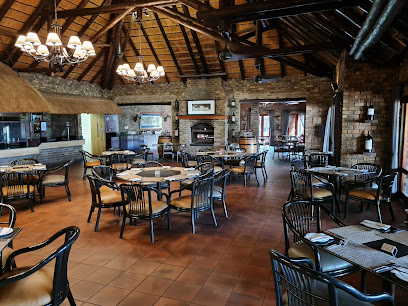
The Grill Room
Experience fine dining at The Grill Room in Sun City Resort, where exquisite flavors meet luxurious ambiance for an unforgettable culinary journey.
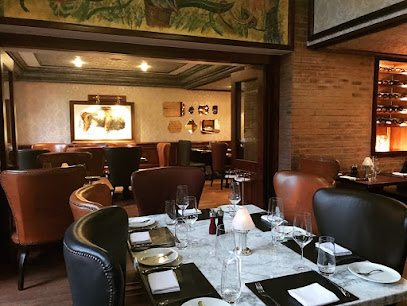
Morokolo Safari Lodge
Discover the beauty of wildlife at Morokolo Safari Lodge, your gateway to the African adventure in Pilanesberg National Park.

Local Phrases about Pilanesberg National Park
-
- HelloDumela
[doo-meh-lah] - GoodbyeTotsiens
[toh-tsee-ens] - YesJa
[yah] - NoNee
[nee] - Please/You're welcomeAsseblief
[ah-seh-bleef] - Thank youDankie
[dahn-kee] - Excuse me/SorryVerskoon my
[fehr-skoon may] - How are you?Hoe gaan dit?
[hoh gahn deet] - Fine. And you?Goed. En jy?
[goot. en yai] - Do you speak English?Praat jy Engels?
[praht yai eng-els] - I don't understandEk verstaan nie
[ayk fehr-stahn nee]
- HelloDumela
-
- I'd like to see the menu, pleaseEk wil die spyskaart sien, asseblief
[ayk vil dee spais-kahrt seen, ah-seh-bleef] - I don't eat meatEk eet nie vleis nie
[ayk ayt nee flays nee] - Cheers!Gesondheid!
[geh-sund-hate] - I would like to pay, pleaseEk wil asseblief betaal
[ayk vil ah-seh-bleef buh-tahl]
- I'd like to see the menu, pleaseEk wil die spyskaart sien, asseblief
-
- Help!Hulp!
[huhlp] - Go away!Gaan weg!
[gahn vayg] - Call the Police!Bel die Polisie!
[bell dee poh-lee-see] - Call a doctor!Bel 'n dokter!
[bell un dohk-tuhr] - I'm lostEk is verlore
[ayk is fehr-loh-ruh] - I'm illEk is siek
[ayk is seek]
- Help!Hulp!
-
- I'd like to buy...Ek wil koop...
[ayk vil kohp] - I'm just lookingEk kyk net
[ayk kayk neht] - How much is it?Hoeveel kos dit?
[ho-veel kohs deet] - That's too expensiveDit is te duur
[deet is teh dyoor] - Can you lower the price?Kan jy die prys verlaag?
[kahn yai dee prays fehr-lahg]
- I'd like to buy...Ek wil koop...
-
- What time is it?Hoe laat is dit?
[ho laht is deet] - It's one o'clockDit is een uur
[deet is ayn oor] - Half past (10)Half tien
[hahlf teen] - MorningOggend
[o-hent] - AfternoonMiddag
[mid-ahg] - EveningAand
[ahnt] - YesterdayGister
[gih-stuhr] - TodayVandag
[fuhn-dahg] - TomorrowMôre
[moh-ruh] - 1Een
[ayn] - 2Twee
[twee] - 3Drie
[dree] - 4Vier
[feer] - 5Vyf
[fayf] - 6Ses
[sehs] - 7Sewe
[seh-weh] - 8Agt
[ahgt] - 9Nege
[neh-ghuh] - 10Tien
[teen]
- What time is it?Hoe laat is dit?
-
- Where's a/the...?Waar is 'n/die...?
[vahr is un/dee] - What's the address?Wat is die adres?
[vaht is dee ah-drehs] - Can you show me (on the map)?Kan jy my wys (op die kaart)?
[kahn yai may vays (ohp dee kahrt)] - When's the next (bus)?Wanneer is die volgende (bus)?
[vahn-ehr is dee fohl-uhn-duh (buhs)] - A ticket (to ....)'n Kaartjie (na ....)
[un kahrt-chee (nah)]
- Where's a/the...?Waar is 'n/die...?
History of Pilanesberg National Park
-
Pilanesberg National Park is located in a unique geological structure known as the Pilanesberg Alkaline Ring Complex. Formed over 1.2 billion years ago, this extinct volcanic crater is one of the largest of its kind. The complex geological formations include rare minerals and rock types, making it a significant site for geological studies.
-
Archaeological evidence indicates that the area now known as Pilanesberg National Park was inhabited by humans during the Stone Age. Tools and artifacts discovered in the region suggest that early hunter-gatherer communities thrived here, taking advantage of the abundant natural resources.
-
During the Iron Age, the region saw the emergence of more permanent settlements. Bantu-speaking peoples migrated into the area, bringing with them advanced techniques in agriculture, pottery, and metalworking. Remnants of these ancient communities, including ruins and artifacts, can be found within the park.
-
In more recent history, the Pilanesberg area was part of the territory controlled by various Tswana-speaking kingdoms. The Bakgatla-Ba-Kgafela people, in particular, have deep historical roots in the region. Their traditional practices and cultural heritage remain influential in the area to this day.
-
The arrival of European settlers in the 19th century brought significant changes to the Pilanesberg region. The area saw increased conflict as colonial forces and indigenous peoples vied for control. The legacy of these encounters is still evident in the cultural and historical landscape of the park.
-
Pilanesberg National Park was officially established in 1979. The creation of the park was part of a broader effort to conserve South Africa's wildlife and natural habitats. The park's formation involved the relocation of local communities and the reintroduction of native animal species, transforming it into one of the country's premier wildlife reserves.
-
One of the most ambitious conservation projects in the history of Pilanesberg National Park was Operation Genesis, initiated in the late 1970s. This project involved the relocation of over 6,000 animals from other regions to repopulate the park. Species such as elephants, rhinos, and lions were reintroduced, significantly boosting biodiversity.
-
Today, Pilanesberg National Park is not only a haven for wildlife but also a site of cultural importance. The park collaborates with local communities to preserve and promote Tswana traditions and heritage. Visitors can partake in cultural tours and learn about the rich history and customs of the indigenous people.
Pilanesberg National Park Essentials
-
Pilanesberg National Park is located in the North West Province of South Africa, approximately 2 to 3 hours' drive from Johannesburg and Pretoria. The most common way to get to Pilanesberg is by car; you can rent a vehicle at OR Tambo International Airport in Johannesburg or Lanseria Airport. Alternatively, you can book a guided tour that includes transportation. There are also shuttle services available from Johannesburg and Pretoria directly to the park.
-
Within Pilanesberg National Park, the primary mode of transportation is by car, as the park is designed to be navigated via self-drive safaris. You can rent a car at nearby airports or through various rental services. There are also guided game drives available, which can be booked through lodges, camps, or tour operators. Walking safaris are available but must be conducted with a qualified guide. Bicycles and motorcycles are not allowed inside the park.
-
The official currency in South Africa is the South African Rand (ZAR). Credit cards are widely accepted at lodges, camps, and larger establishments within and around Pilanesberg National Park. However, it's advisable to carry some cash for smaller purchases, tips, and in case you encounter places that do not accept cards. ATMs are available in nearby towns such as Sun City, but it's best to withdraw sufficient cash before entering the park.
-
Pilanesberg National Park is generally safe for tourists, but standard precautions should be taken. Avoid leaving valuables in your car and always lock your vehicle. Be cautious of wildlife and never exit your vehicle except at designated areas. While the park itself is safe, exercise caution in surrounding areas, especially at night. Petty crime can occur in nearby towns, so keep an eye on your belongings.
-
In case of an emergency, contact the park administration or your lodge reception immediately. Emergency numbers to keep handy are: Police – 10111, Ambulance – 10177. Most lodges have first aid kits and basic medical supplies. For medical emergencies, the nearest hospitals are in Rustenburg and Sun City. It is highly recommended to have travel insurance that covers medical emergencies and evacuation.
-
Fashion: Do wear neutral-colored clothing suitable for safari activities. Avoid bright colors that can attract wildlife. Religion: Do respect local customs and traditions, although Pilanesberg is a multicultural area with no specific religious restrictions. Public Transport: Public transport options to the park are limited; it’s best to rent a car or use shuttle services. Greetings: Do greet people with a handshake and a friendly 'hello.' Eating & Drinking: Do try local cuisine at lodges and camps. Don’t eat or drink outside of designated areas to avoid attracting wildlife.
-
To experience Pilanesberg like a local, consider visiting during off-peak seasons for a more intimate wildlife experience. Engage with park rangers and guides, who can provide insightful information about the park's flora and fauna. Take advantage of early morning and late afternoon game drives, as these are the best times to see wildlife. Don't miss the opportunity to visit nearby attractions such as Sun City for a mix of leisure and entertainment.
Trending Landmarks in Pilanesberg National Park
-
Sun City Resort
-
Valley of Waves
-
Bakubung Bush Lodge
-
Kwa Maritane Bush lodge
-
Ivory Tree Game Lodge
-
Shepherd's Tree Game Lodge
-
Bakubung Gate Pilanesberg National Park
-
Black Rhino Game Lodge
-
Pilanesberg
-
Mankwe GAMETRACKERS
-
Predator World
-
Black Rhino Game Reserve
-
Zip 2000
-
Rathlogo Hide
-
Tshukudu Bush Lodge
Nearby Cities to Pilanesberg National Park
-
Things To Do in Gaborone
-
Things To Do in Johannesburg
-
Things To Do in Lobatse
-
Things To Do in Molepolole
-
Things To Do in Mahalapye
-
Things To Do in Polokwane
-
Things To Do in Palapye
-
Things To Do in Serowe
-
Things To Do in Selebi-Phikwe
-
Things To Do in Nelspruit
-
Things To Do in Butha-Buthe
-
Things To Do in Leribe
-
Things To Do in Mbabane
-
Things To Do in Malkerns
-
Things To Do in Teyateyaneng


